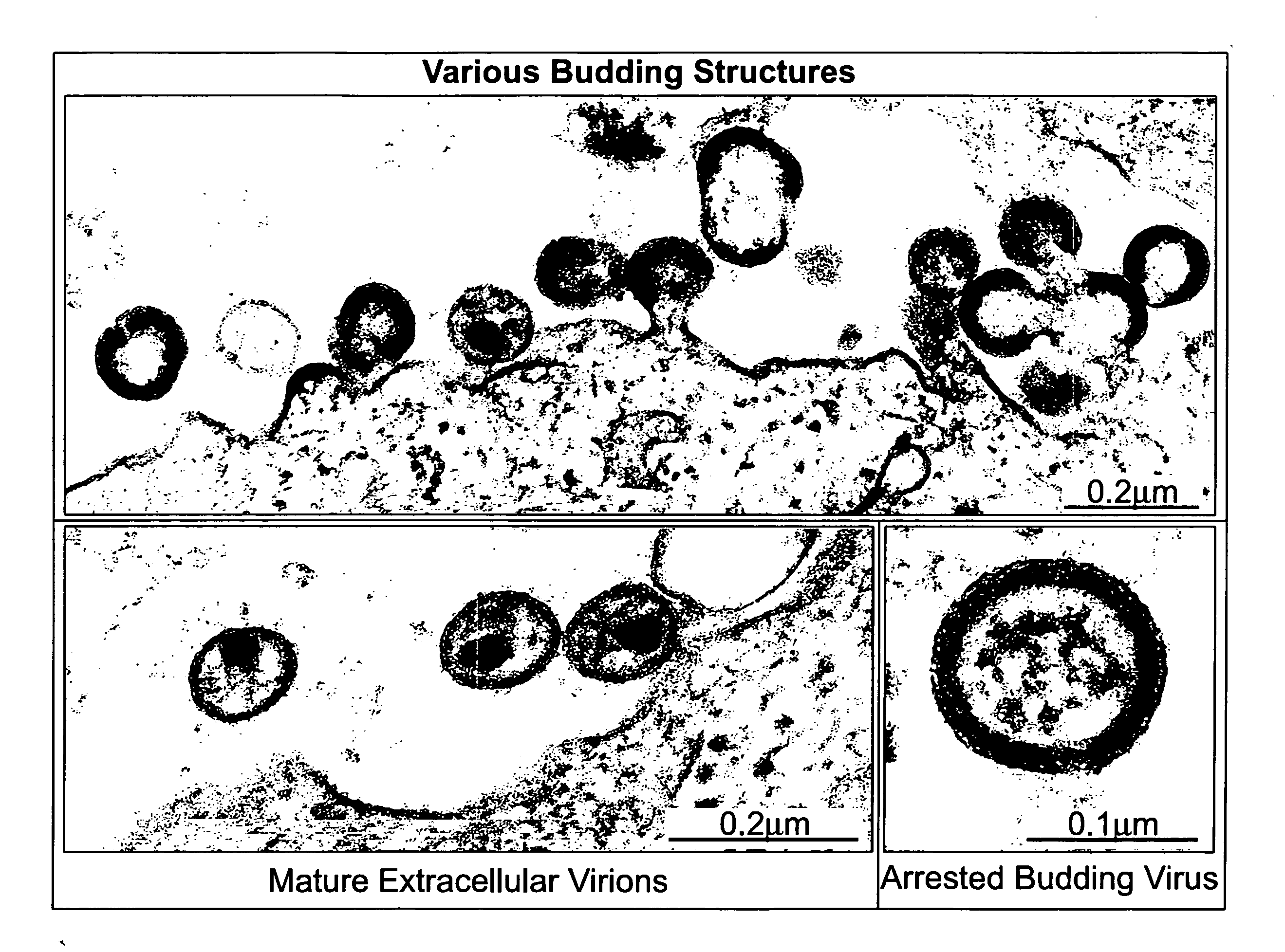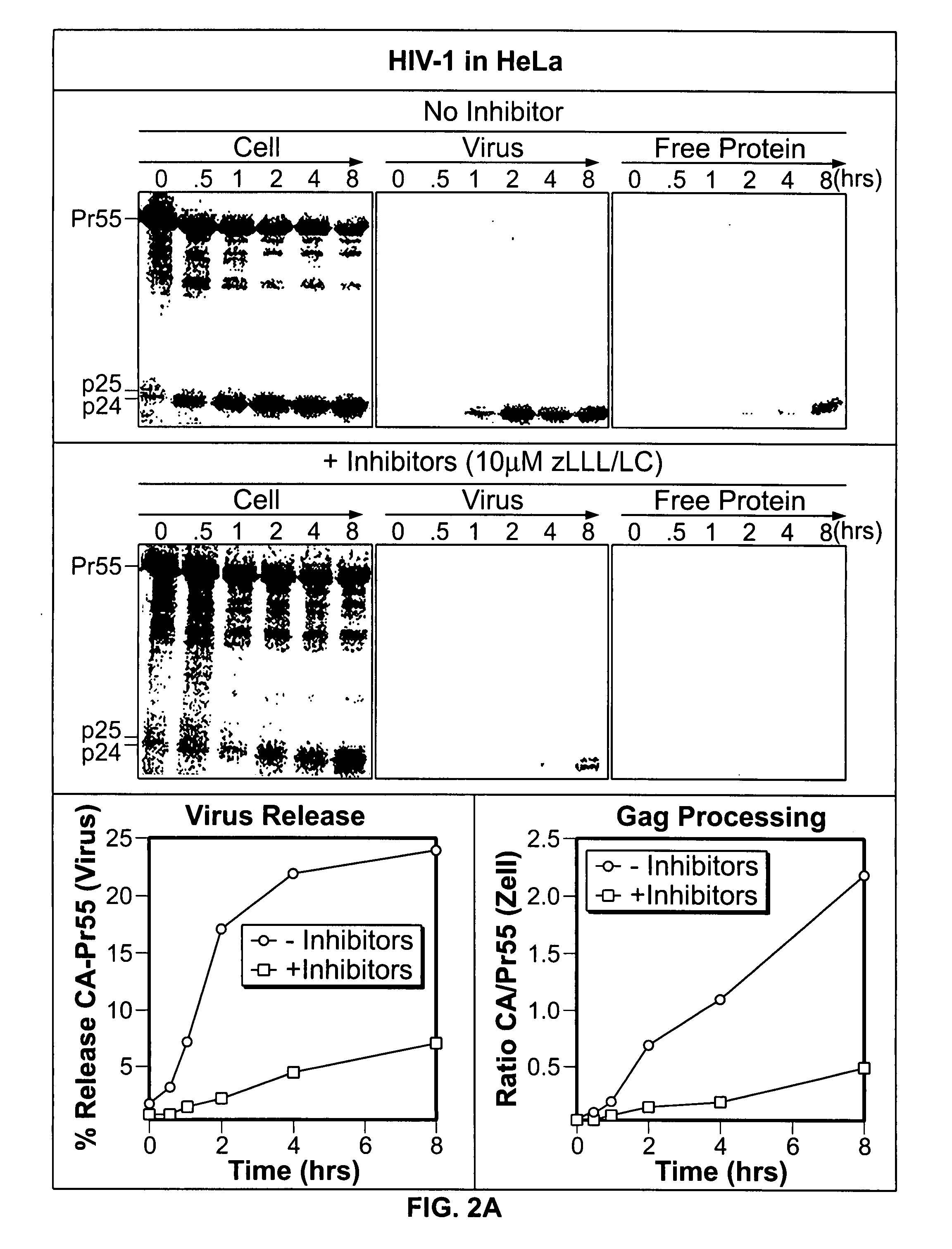Agents for the treatment of viral infections
a technology for viral infections and agents, applied in the field of agents for the treatment of viral infections, can solve the problems of limiting the spread of acute infection with hepatitis viruses, unable to achieve the effect of effective vaccination strategy, and no other mechanism for stimulating a still poorly understood natural immunity, so as to reduce the amount of pres protein
- Summary
- Abstract
- Description
- Claims
- Application Information
AI Technical Summary
Benefits of technology
Problems solved by technology
Method used
Image
Examples
example 2
Electron-Microscopic Analysis of HIV-1-Infected MT-4 Cells After Treatment with Proteasome Inhibitors
[0236] CD4+ T cells, MT-4, were infected with HIV-1NL4-3 and cultured in RPMI for approx. 4 days. At the time of maximum virus production, the cells were washed, sucked into cellulose capillaries and treated with 50 μM (micromol) zLLL. The experimental details of fixing, preparation of thin sections and transmission electron microscopy are described in Example 6e. FIG. 1 depicts representative sections of electron-microscopic images.
example 3
Proteasome Inhibitors Inhibit Gag Processing and Virus Release from Infected T-Cell Cultures and Transfected HeLa Cells
[0237] The inhibitory action of proteasome inhibitors on the kinetics of Gag processing and virus release was biochemically analyzed by carrying out pulse / chase analyses. The experimental details of infection, culturing, DNA transfection and pulse / chase experiments are described in Example 6g. To this end, either HIV-1-infected CD4+ T-cell cultures or cultures of HeLa cells were used, which were transfected with proviral DNA of HIV-1NL4-3 or HIV-2ROD10. Usually, parallel cultures were subjected to methionine depletion for 30 min at the time of maximum expression of HIV proteins, then metabolically pulse-labeled with [35S]-labeled methionine for 30 min and subsequently incubated in a chase medium with an excess of nonradiolabeled methionine for a period of 8 hours. The treatment with proteasome inhibitors usually began at the time of methionine depletion and was mai...
example 4
In vitro Gag Processing of Pr55
[0238] Recombinant HIV-1 Gag polyprotein Pr55 was prepared in insect cells and recombinant HIV-1 protease was prepared in E. coli. The experimental details of expression, purification and determination of the enzymic activity as well as carrying out the in vitro cleavage reactions and Western blots are illustrated in more detail in Example 6f. The enzyme-to-substrate ratios (protease-Pr55 ratio) were chosen in such a way that substrate conversion was relatively slow. After 30 min of reaction, approx. 50% of Pr55 had been cleaved. Under these conditions it is possible to determine even weakly inhibitory effects on the enzymic activity of the protease. Under these sensitive conditions, it was not possible to detect any inhibition of protease activity, not even under conditions under which both inhibitors, zLLL and LC, were tested at a 10-fold higher concentration than in the cell culture (FIG. 3, reactions 4-9). As control: the HIV-1-specific proteasome...
PUM
 Login to View More
Login to View More Abstract
Description
Claims
Application Information
 Login to View More
Login to View More - R&D
- Intellectual Property
- Life Sciences
- Materials
- Tech Scout
- Unparalleled Data Quality
- Higher Quality Content
- 60% Fewer Hallucinations
Browse by: Latest US Patents, China's latest patents, Technical Efficacy Thesaurus, Application Domain, Technology Topic, Popular Technical Reports.
© 2025 PatSnap. All rights reserved.Legal|Privacy policy|Modern Slavery Act Transparency Statement|Sitemap|About US| Contact US: help@patsnap.com



